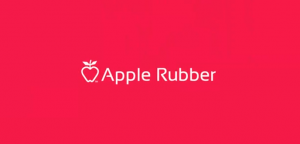The rubber industry is often perceived as an “old” industry due to its origins in the 1800s. While that may be true, the industry still continues to evolve and innovate. It’s not just about pulling sap from rubber to produce tires anymore; it’s about advancements that have enabled us to send reusable rockets to space and drive around in Electric Vehicles. Rubber seals are still as important today as advanced microchips, a fact that often goes unnoticed.
Industry 4.0
The rubber industry is not stagnant by any means; it’s a dynamic sector at the forefront of innovation, constantly adapting to the evolving demands of modern manufacturing. This is where the exciting concept of Industry 4.0 comes into play, revolutionizing the way we manufacture and paving the way for a more efficient and sustainable future.
Industry 4.0, the fourth industrial revolution, is characterized by the integration of advanced technologies into manufacturing processes. These technologies, such as automation, data exchange, and AI, are revolutionizing the way we produce goods. For the rubber industry, this means adopting new methods for enhancing efficiency, quality, and sustainability. These advancements are not just about using new tools, but about fundamentally changing the way we think about and approach manufacturing.
One concrete example of how the rubber industry embraces Industry 4.0 is the networking of rubber injection molding machines to allow direct monitoring from EPR/scheduling systems. This allows master schedules to monitor the production floor in real time. Output signals, such as cycle times, machine downtimes, and jobs being run, are collected from machine controls. This data ensures that production jobs meet customer schedules and any expected delays are predictable if machines are down for too long.
Additional advancements in the rubber industry include the ability to monitor shot size, mold temperature, clamp pressure, and other variables. This data is used to run statistical trends and ensure that each part is within the correct process window, creating a continuous stream of acceptable parts. This process control is critical to maintaining the repeatability and quality of each shot. If variables start to change, alerts can be triggered to notify production staff before a large number of parts are produced out of specification.
Reduction of Energy Consumption
Energy consumption is becoming even more critical in rubber manufacturing. Reducing the energy needed by manufacturing processes is a continuous goal in striving to be more sustainable. Rubber molds can decrease energy consumption by at least 20% with new improvements in rubber materials and energy-efficient machines.
As energy costs have been increasing over the years, silicone compounds are looking at the processing temperatures of rubber. Typical Liquid Silicone Rubber (LSR) molding is done at 150°C to 175°C. An additional post-cure to improve the compression set and burn off extra volatiles is done for four hours at 200°C. New LSR compounds are also being developed, so curing temperatures are at 120°C to 140°C. This dramatically reduces the energy requirement to heat molds to higher temperatures. An additional benefit is reducing cooling requirements to keep manufacturing areas cool for employees, especially in closed systems like cleanroom molding. With any energy balance, the less energy going into a system, the less energy needs to be removed.
In addition, less or no post-cure is needed. Not having to post-cure silicone for an improved compression set or reduced volatiles reduces the need to heat ovens using valuable energy. Both these advancements can have significant energy savings and reduce carbon footprints.
Hydrin Rubber to Replace Chloroprene
The U.S. Environmental Protection Agency (EPA) has put new restrictions on chemical plants that produce chloroprene rubber. Restrictions on chemical plant production can cause significant disruption in the supply chain if not addressed promptly.
Chloroprene rubber is used in many sealing applications. Chloroprene rubber has some oil resistance and can withstand weather applications better than NBR seals. Many military specifications still use chloroprene rubber.
Epichlorohydrin (ECO) rubber is being examined to replace many of these applications. ECO can be used at 125°C, compared to 100°C in chloroprene rubber. ECO also provides good resistance to oil, fuel, and ozone resistance, as well as superior low-temperature properties. It also features excellent permeation resistance, which is why ECO has been mainly used for fuel hose applications. With new polymers and an improved compression set, ECO has been considered as a replacement for the CR application for sealing.
The rubber industry is not only embracing Industry 4.0 principles, but also demonstrating a commitment to continuous material innovation. This ongoing development of new rubber compounds with specific properties is a testament to the industry’s adaptability and responsiveness to the changing demands of modern manufacturing. Through these efforts, the industry is successfully navigating the complexities of modern manufacturing while improving sustainability.
